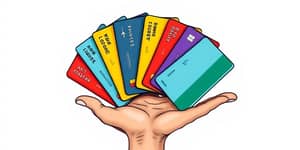In today’s world, credit cards are more than just a payment tool—they’re gateways to unlock greater financial advantages when used thoughtfully. By exploring each perk and matching it to your lifestyle, you can transform everyday spending into valuable rewards, enhanced security, and genuine savings.
Overview of Credit Card Benefits
Credit cards offer a spectrum of benefits ranging from comprehensive fraud protection to enticing rewards programs. Whether you’re earning cashback on essentials or accumulating travel miles for your next vacation, understanding these advantages empowers you to make informed financial decisions and avoid paying unnecessary interest.
Some cards even provide introductory perks like 0% APR periods or generous sign-up bonuses, giving cardholders breathing room to manage larger purchases or consolidate existing balances without incurring extra costs.
Categories of Rewards and Perks
At their core, credit card benefits fall into several major categories:
- Cashback Rewards: Receive 1%–8% back on purchases, often as statement credits or deposits.
- Points Programs: Earn points per dollar spent and redeem for merchandise, gift cards, or travel.
- Travel Miles: Accumulate miles that translate into flights, hotel stays, and car rentals.
- Introductory Offers: Enjoy 0% APR on purchases or balance transfers for 12–15 months.
- Travel Perks: Complimentary lounge access, no foreign transaction fees, and credit for TSA PreCheck®.
- Purchase Protection: Extended warranties, coverage for damaged or stolen items, and robust fraud liability policies.
Matching Cards to Your Needs
Choosing the right card depends on your unique spending habits and goals. Here’s an overview of common credit card types:
- Cash Back Cards: Flat-rate or tiered rewards on everyday purchases like groceries and gas.
- Travel Cards: General travel cards versus co-branded airline or hotel cards, each offering distinct perks.
- Secured Cards: Ideal for building or rebuilding credit with a refundable security deposit.
- Business Cards: Tailored benefits for entrepreneurs, including higher category bonuses on office supplies and advertising.
- Student and Retail Cards: Designed for beginners or frequent shoppers at specific stores.
Comparing Rewards and Redemption Options
When evaluating reward structures, consider your average monthly spend. A flat 2% cashback card may outperform a 5% rotating category card if you can’t meet activation or spending thresholds. Additionally, redemption flexibility matters:
- Cashback can appear as statement credits or direct deposits.
- Points may unlock higher value when transferred to airline or hotel partners.
- Miles often yield the best value on international travel redemptions.
Always verify caps, expiration policies, and blackout dates. Some high-value redemptions require advanced planning or carry capacity limits.
Strategies to Maximize Every Dollar
Adopting targeted strategies ensures you never leave benefits on the table:
- Align cards with your highest spending categories like groceries, dining, or travel.
- Combine multiple cards to cover different bonus categories for optimal reward stacking.
- Plan large purchases during the sign-up period to secure generous welcome bonuses.
- Pay balances before 0% APR offers expire to avoid hidden interest charges.
- Monitor rewards expiration and redeem before value diminishes or lapses.
- Compare annual fees against tangible perks to ensure net positive return.
Example Cards and Rewards Rates
Below is a snapshot of a popular card’s bonus categories and typical rates:
Considerations and Limitations
Even the best cards come with caveats. Rotating categories often require quarterly activation, and many bonus rates have spending caps. After introductory APR periods, variable rates can climb above 25%, making it crucial to pay on time and avoid revolving high balances.
Eligibility requirements can also limit access to top-tier cards—most require good to excellent credit scores. Late payment or cash advance fees can quickly offset any earned rewards if you’re not disciplined.
Tools and Ongoing Management
Leveraging digital tools can simplify reward tracking and card management. Many issuers offer apps that categorize spending, display upcoming bonus activations, and forecast reward earnings. Third-party comparison sites help identify the best card for your patterns, while budgeting apps ensure you stay within monthly limits.
By regularly reviewing statements, activating new bonus categories, and rotating primary cards when needed, you’ll maintain maximum reward efficiency and keep your credit utilization in check.
In conclusion, credit cards are powerful when harnessed correctly. Through strategic selection, disciplined repayment, and smart redemption, you can transform routine expenditures into meaningful rewards. Start today: evaluate your monthly habits, choose the right mix of cards, and embrace a rewarding financial journey.
References
- https://www.collegeave.com/articles/credit-card-benefits-rewards-explained/
- https://www.nerdwallet.com/compare/credit-cards
- https://www.capitalone.com/learn-grow/money-management/types-of-credit-cards/
- https://www.creditkarma.com/credit-cards/rewards-cards
- https://www.citi.com/credit-cards/understanding-credit-cards/types-of-credit-cards
- https://thepointsguy.com/credit-cards/rewards/
- https://www.experian.com/blogs/ask-experian/what-are-the-different-types-of-credit-cards/
- https://creditcards.chase.com/rewards-credit-cards










